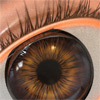- Mon Jul 09, 2007 9:09 pm
#236686
I have to make two daylight exterior renderings and one nightshot.
My daylight images can be OK with SL 12 (maybe some noise cleaner to improve it) but my nightshot is still very noisy even after SL 12.00
I could compare it with SL 6 or 7 of the daylight pictures.
So, I guess now you can understand the title....
I know this has been asked and answered before but I would be very glad to hear an explanation... Thank you in advance
My daylight images can be OK with SL 12 (maybe some noise cleaner to improve it) but my nightshot is still very noisy even after SL 12.00
I could compare it with SL 6 or 7 of the daylight pictures.
So, I guess now you can understand the title....
I know this has been asked and answered before but I would be very glad to hear an explanation... Thank you in advance
I won't sign it, if it is not a piece of art.. So far, I haven't done any...
Revit Architecture 2012, Max Design 2012, AutoCAD 2012, Moi3d, Maxwell, Octane ... and many working hours
Revit Architecture 2012, Max Design 2012, AutoCAD 2012, Moi3d, Maxwell, Octane ... and many working hours


